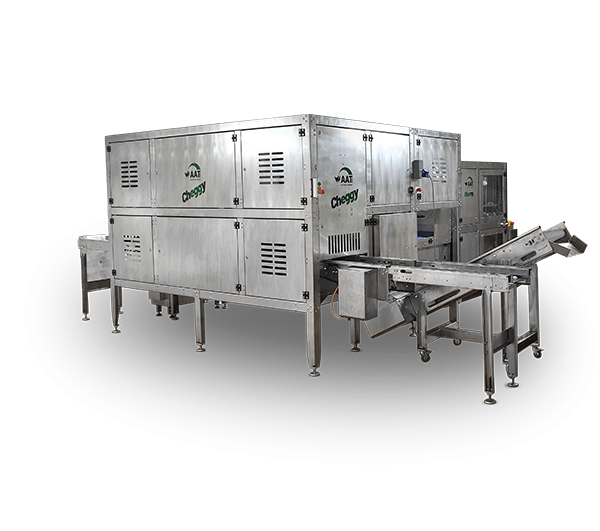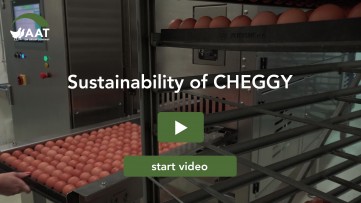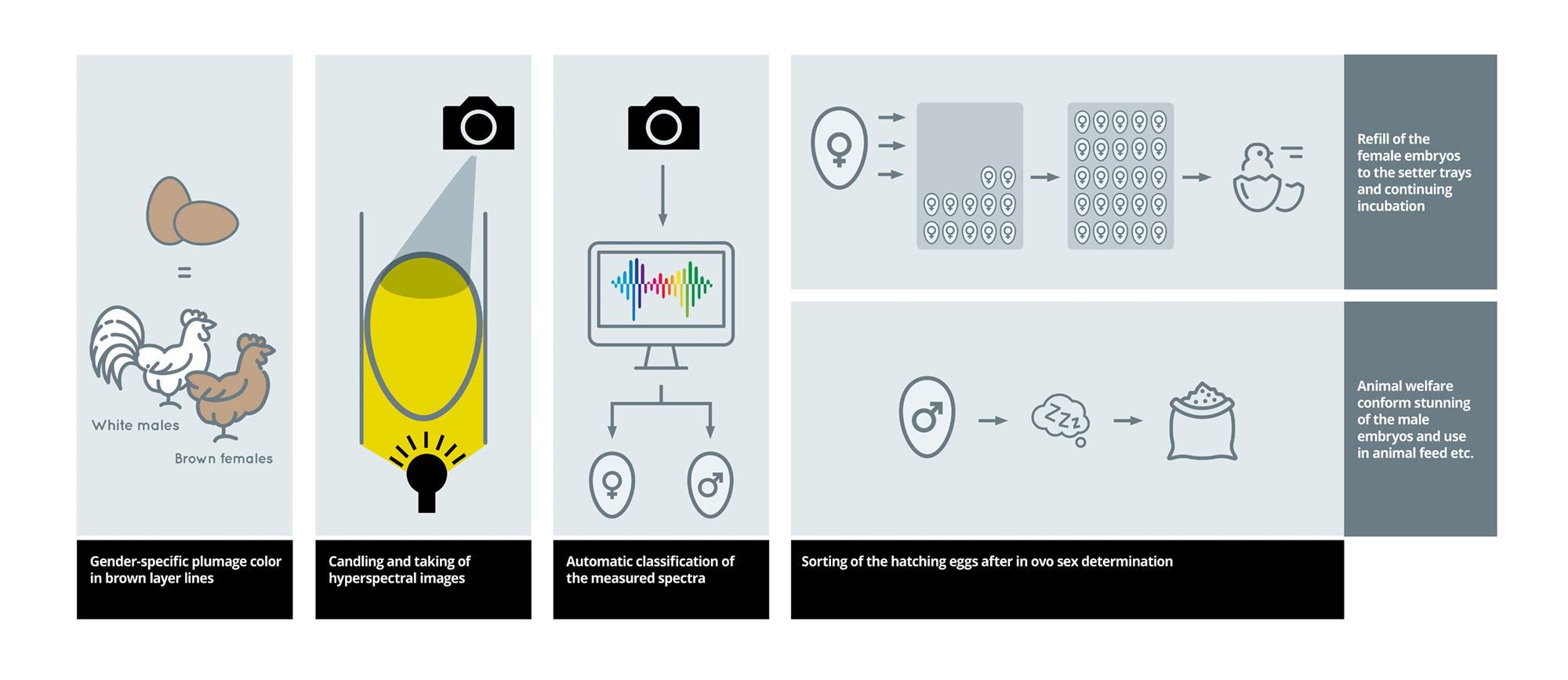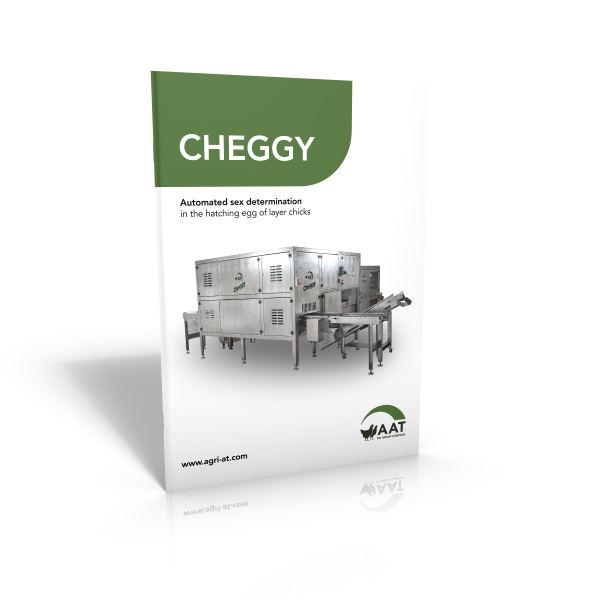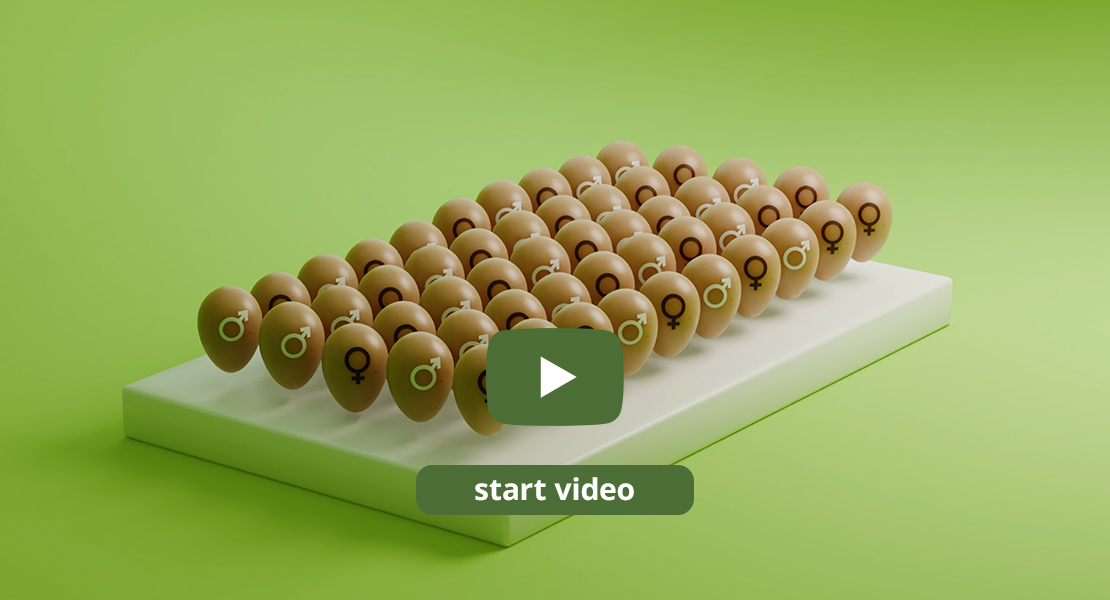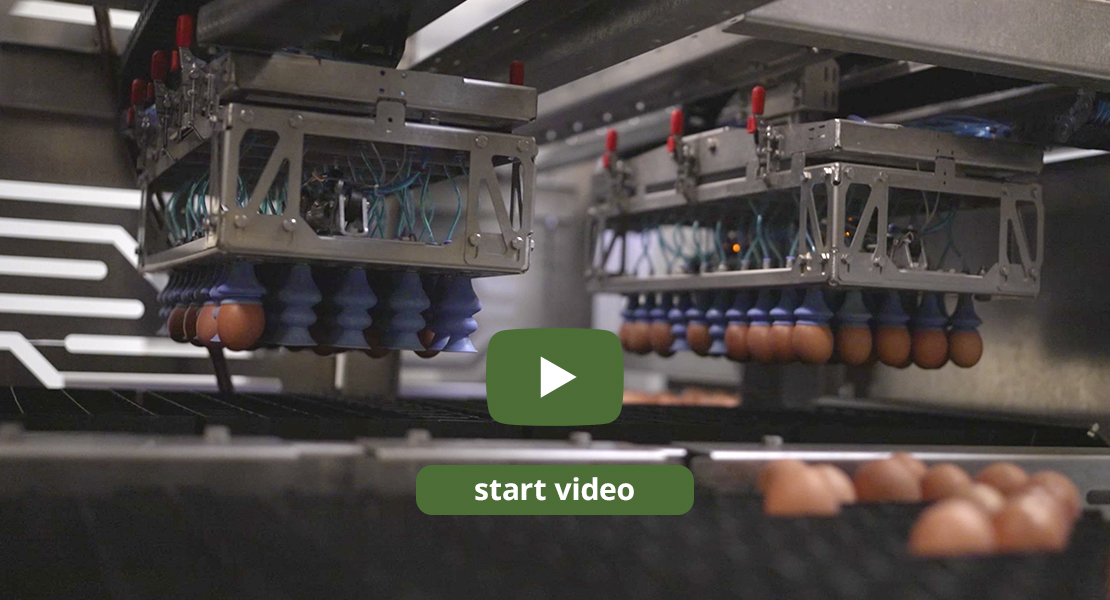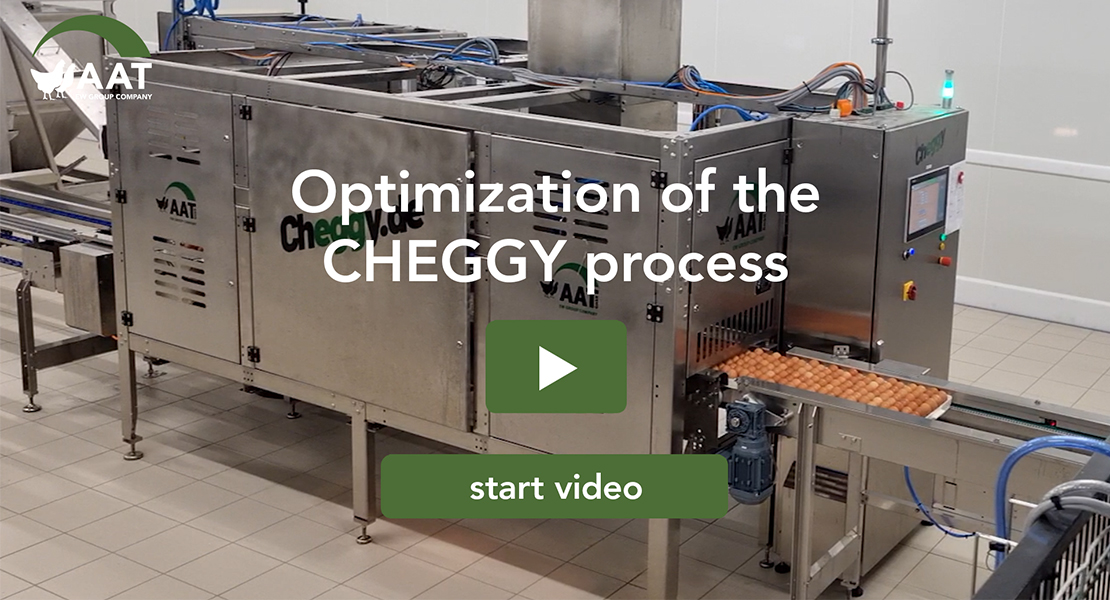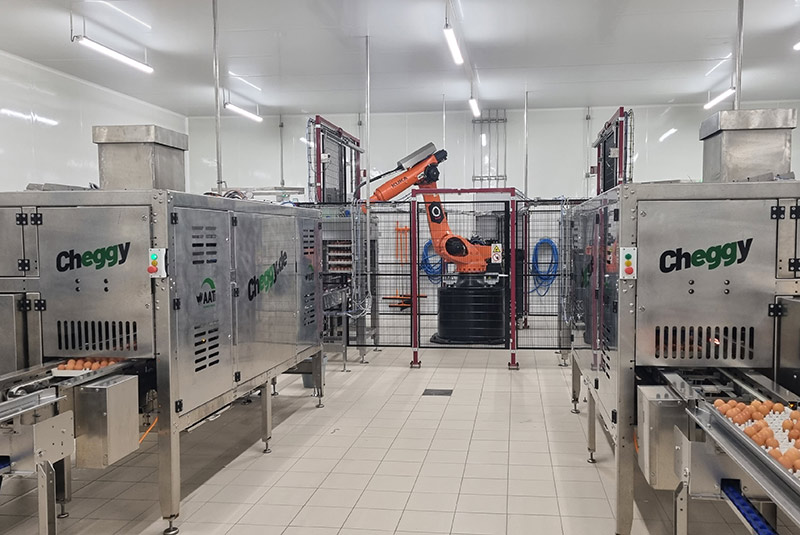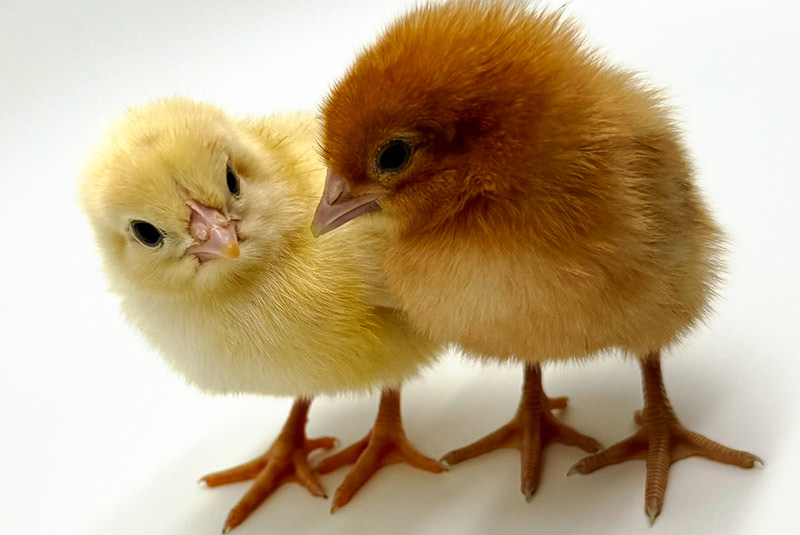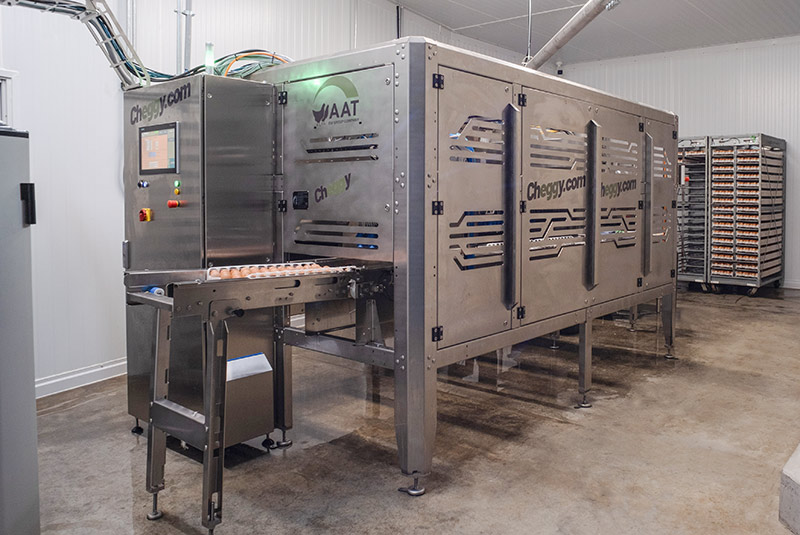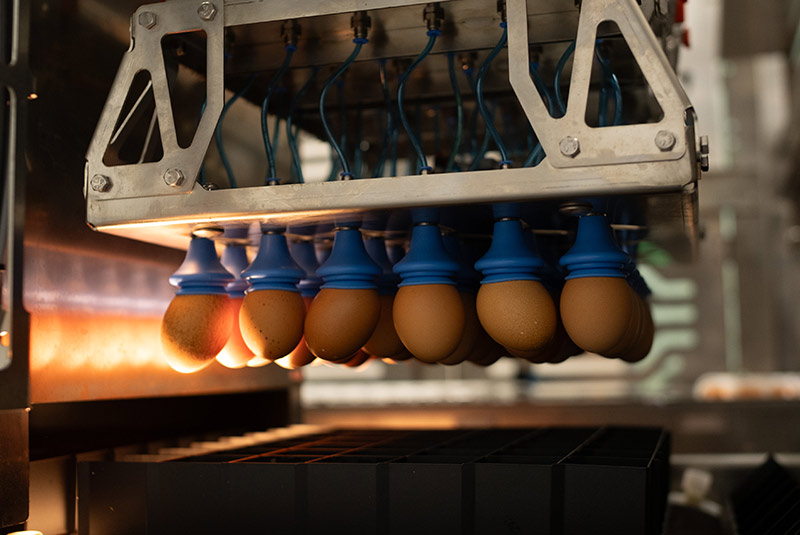CHEGGY & CHEGGY Zoom
Advantages
In the interests of animal welfare, CHEGGY and CHEGGY Zoom offer hatcheries the most cost-effective method of egg sexing currently available on the market. The fully automated system achieves a high throughput of 25,000 eggs per hour with maximum safety.
- Egg sexing with very high accuracy
- No risk of contamination or injuries due to the non-invasive process
- Fully automated, high-speed measurement for up to 25,000 eggs per hour
- Meets the highest animal welfare and biosecurity requirements
- Currently the most cost-effective process on the market
- No risk of contamination or injuries to the embryo
- Almost no hatch losses
- Particularly environmentally friendly, as no consumables are used
- Lowest energy consumption
- Compact and space-saving design
- Made almost entirely of stainless steel for easy and efficient cleaning
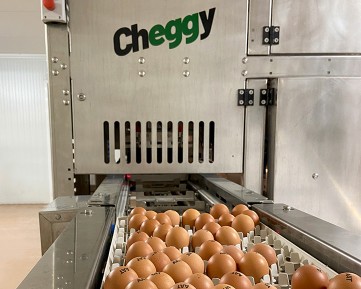
Non-invasive and cost-efficient
CHEGGY and CHEGGY Zoom in practice
The animal welfare-friendly alternative to the practice of culling day-old male chicks is in ovo sex determination with CHEGGY and CHEGGY Zoom. This fully automated machine uses hyperspectral imaging technology that identifies the gender in the brown layer lines by embryonic plumage colours. It is known from experiments and test series that the quills are already visible around hatching day 10 and that the gender-specific colour expression in brown laying hybrids already differs significantly on day 11. In the CHEGGY Zoom, the technology has been further developed and even more information can be obtained from the individual egg through the use of line scan cameras, improved light management and special algorithms. The CHEGGY Zoom is therefore used in compliance with the law and under the conditions of the KAT.
CHEGGY / CHEGGY Zoom is able to safely check up to 25,000 eggs per hour. Thanks to its non-invasive process, there is no risk of contamination and no risk of injuries to the embryo.
Sustainabale and climate friendly
Contribution to climate protection
CHEGGY / CHEGGY Zoom not only offers the advantage of making an important contribution to animal welfare, but is also sustainable. One factor contributing to this is the accuracy of the machine: Over 96 percent of hatched chicks are female. In addition, in ovo sexing saves resources. Furthermore, the process does not require any chemicals.
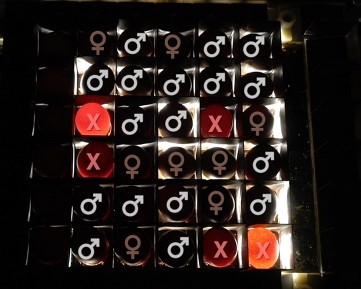
The hyperspectral measurement technology
Let there be light
Due to gender-specific plumage colours in brown layer lines, the sex can already be determined in the embryo based on its first feathers. This is how it works: inside the measuring chamber, eggs are illuminated from below and a spectral image is taken from above. The spectrum of the image is then analyzed by a computer automatically. By using an algorithm, that, in contrast to neural network, is based on a so-called parametric model, the sex can be determined.
The procedure is non-invasive, keeping the eggshell intact. Based on differences in the measured light spectra, an algorithm classifies the gender. In addition to sex determination, unfertilized eggs are also identified and sorted out at the same time.
The hyperspectral measurement technology does not require expensive consumables. This is another reason why it is around half of the cost of alternative methods and, most importantly, is more environmentally friendly.
